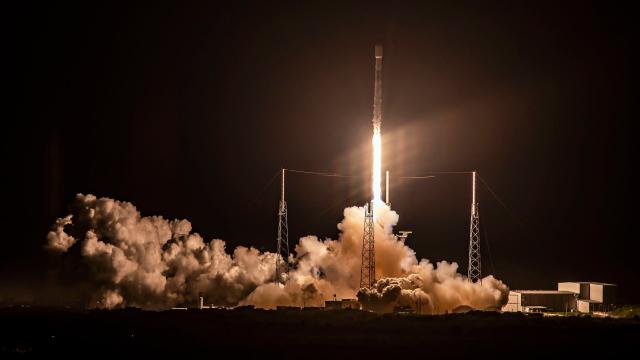Based on requirements and procedures detailed in a Federal Communications Commission report published last week, SpaceX might not have good enough broadband service to qualify for phase one of the Rural Digital Opportunity Fund auction in October. In fact, the FCC thinks it’s unlikely that any low-Earth orbit satellite company will be able to meet its sub-100 milliseconds latency requirement. “We are … unaware of any low-Earth orbit network capable of providing a mass market retail broadband service to residential consumers that could meet the commission’s 100 ms round-trip latency requirements,” the agency said in a statement to CNET.
The FCC does note in its report that it takes a case-by-case approach to determining which companies it will allow to participate in the auction. Companies that have not yet deployed broadband at required speeds or latency, like SpaceX’s Starlink, are given a chance to prove that they have a plan in place to meet those requirements.
However, the FCC also says that it does not find it “prudent to authorise bidding for performance tier/latency/technology combinations that lack a proven track record of deployment at the speeds and latencies” it expects to occur. This includes any broadband company that does not have a track record of delivering the required speeds and latency to individual homes. The FCC says its Rural Digital Opportunity Fund auction is not for testing “unproven technologies using universal service support.”
The Rural Digital Opportunity Fund is a grant the government gives to ISPs, usually in the millions of dollars, to expand their service to more rural parts of the U.S. It’s a new initiative created by the FCC last year (or, rather, a replacement for the Connect America Fund created during the Obama administration) as a way to bridge the digital divide and give those living outside of urban or suburban areas access to high-speed internet.
Starlink has not expanded to retail customers on a commercial basis, but alleges that its satellite internet service not only meets the FCC’s requirements, but surpasses them. It filed an ex parte letter with the FCC in May 2020 that summarized a phone conversation between SpaceX and FCC staff, stating that its satellite system “easily clears the 100 ms threshold for low-latency services.”
Low latency is kind of a big deal. The lower the latency, the faster data transfers to and from your computer, which means that movie you want to watch on Netflix will load faster, and your internet connection won’t lag if you’re trying to play Overwatch. Your internet speed helps with that too, but latency tracks how many servers, or “stops,” your machine needs to communicate with before it that data transmission is complete. Physical distance plays a role in this as well, as the further you physically are from a server, the more stops the data makes.
You can test this out for yourself. If you are running Windows, type “cmd” into the search bar and then hit “enter” to open the command prompt. Type in “ping google.com” or another website, then hit “enter.” Once it’s done running the latency test, it will give you your round-trip latency time. Generally, anything below 100 ms — the threshold the FCC is setting — is considered good, although for things like gaming it’s preferable to be under 50 ms.
Cable-based broadband is traditionally way faster than satellite internet, though; Satellites are much, much farther away from us than an ISP’s server. According to BroadbandNow, the average round-trip latency for satellite internet is 500 ms, but that’s for regular satellites. LEOs like SpaceX’s Starlink could shrink that latency time to under 100 ms because the satellites are closer to Earth — but again, the FCC remains sceptical, because SpaceX hasn’t shown it can do that on a mass scale as of now. The company has until July 15 to convince the FCC otherwise if it wants to qualify for the rural subsidy program.
Regardless of if it qualifies for the FCC subsidy, CNET reports, SpaceX plans to “have a limited offering in the northern US and Canada by the end of the year with service expanded globally throughout 2021.” Just last week, it launched 58 Starlink satellites into space. The company hopes to create a megaconstellation of 12,000 satellites, according to CNET, to provide broadband across the world.
